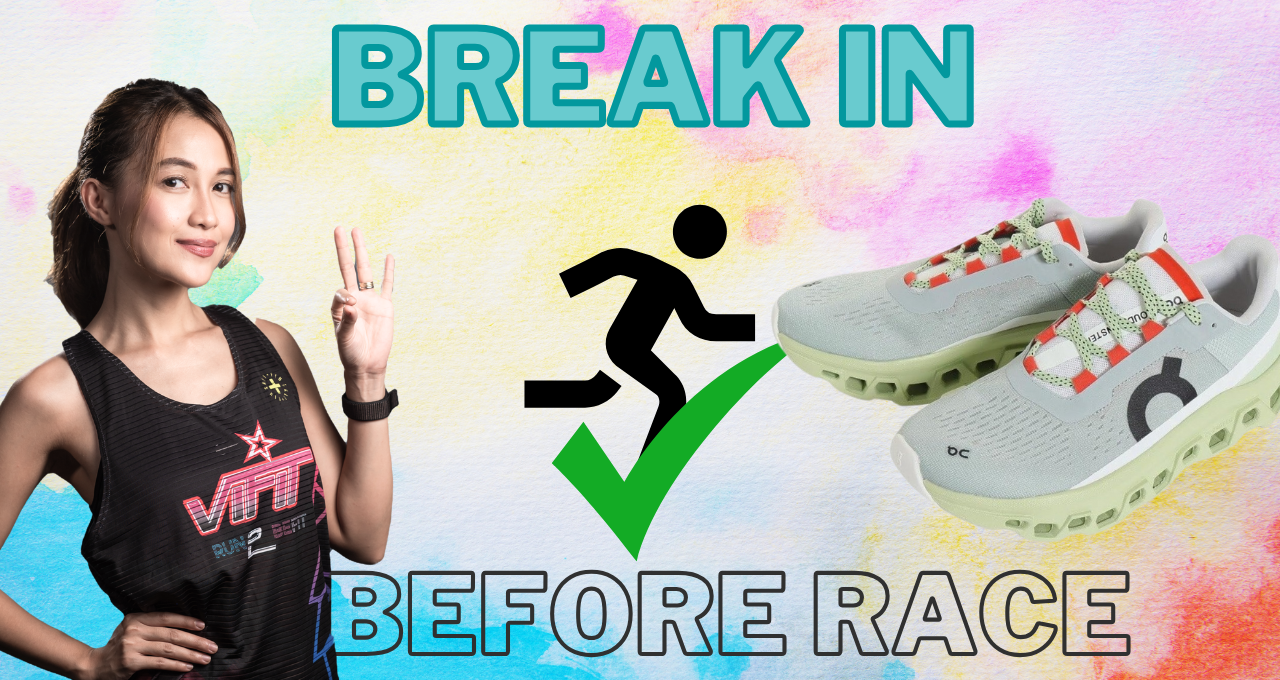Your cart is currently empty!

“Breaking In Your Running Shoes: Essential Pre-Race Preparation”
/
Breaking in your running shoes before race day is essential to avoid blisters, discomfort, and other issues that can hinder your performance. A proper break-in period ensures that your shoes mold to the shape of your feet, maximizing comfort and support, which is particularly important for the longer distances and repetitive motions of a race. Here’s a comprehensive guide on why and how to break in shoes before your next big event.

- Why Breaking in Shoes is Important
New running shoes come with a variety of materials and features, such as cushioning, midsoles, and outsoles, that need to adapt to your unique stride and foot shape. When shoes are brand new, they’re often stiffer and less forgiving, which can cause blisters, pain, and even injuries if worn for a prolonged period, such as during a race. Breaking in your shoes helps soften the materials, allowing them to adapt to your feet and reducing any potential areas of friction or tightness.
- How Long Should You Break in Shoes?
The break-in period for running shoes can vary depending on factors such as the type of shoe, the materials, and the individual runner’s foot type. As a general rule, it’s best to start breaking in new shoes 2-3 weeks before race day, allowing for approximately 20-50 miles of running in them. This mileage will give you a good idea of how the shoes will feel over longer distances without putting too much strain on your feet in a short time. If your shoes are for a longer race, such as a marathon, you may need a slightly longer break-in period to get a complete feel for their comfort and support.
- The Break-In Process
Start Slow: Initially, wear the shoes around the house or for short walks. This lets your feet get used to the new fit without the intensity of running. You can also try wearing them for non-running activities like gym workouts or errands.
Gradually Increase Mileage: After the initial wearing period, start running shorter distances in your new shoes. Begin with easy, low-mileage runs to gauge any discomfort or areas that need extra attention. Gradually increase the distance over the weeks leading up to the race. Aim for runs at a comfortable pace to allow the shoes to adapt without additional strain.
Pay Attention to Fit and Feel: During these initial runs, take note of how your feet feel. If you experience any pain or discomfort, especially in the arch or heel, it could be an indication that the shoes aren’t the right fit. Assessing this early on lets you make adjustments, like adding insoles or considering a different shoe if necessary.

Vary Your Workouts: Incorporate different types of runs, such as interval training, tempo runs, and long-distance sessions, during the break-in period. This approach gives you a sense of how the shoes handle different intensities and types of movement, which helps build a more versatile and broken-in shoe.
Alternate Between Shoes: If you have an older pair that you’ve been training in, continue using them alongside your new pair. This alternating approach gives your feet time to adapt gradually without subjecting them to constant stress from only wearing the new shoes.
- Common Issues and Solutions
Blisters: Blisters are a common issue when breaking in new shoes. If you notice hotspots where blisters could form, consider using blister tape or specialized running socks to reduce friction. Moisturizing your feet can also help minimize chafing.
Tightness: If your shoes feel tight, especially in the forefoot, try loosening the laces or adjusting the lacing pattern. Running stores often have different lacing techniques that can help alleviate pressure points.
Pressure Points: If you notice any painful spots on your feet, take time to rest and avoid running until the discomfort subsides. Sometimes, it may be necessary to add supportive insoles or orthotics to improve fit and comfort.
- Signs Your Shoes Are Properly Broken In
A well-broken-in pair of running shoes should feel comfortable, with minimal pressure points or discomfort. By the end of the break-in period, you should be able to complete a long run (close to race distance, if possible) in the shoes without experiencing pain. Additionally, the sole should feel more flexible, allowing a natural range of motion that won’t impede your running gait.
- When to Consider a Different Pair
If, after the break-in period, you still experience significant discomfort, it may be time to try a different shoe. Persistent issues, like arch pain or severe blistering, are signs that the shoe model might not be suitable for your foot type. Every runner has unique needs based on factors like arch height, stride, and foot width, so don’t hesitate to try another brand or style if your current pair isn’t working out.
- Final Tips for Race Day Preparation
In the week leading up to race day, avoid running too many miles in your new shoes. Give your feet a chance to recover, especially if you’re doing any tapering before the event. Opt for a few short runs at an easy pace, so the shoes stay comfortable and fresh without too much added stress.

Conclusion
Breaking in your shoes before race day is a critical step for any runner. The time spent adjusting to your new shoes can prevent injuries, improve comfort, and enhance your overall race performance. By following a gradual and mindful break-in process, you can ensure that your shoes support you fully from start to finish on race day.
